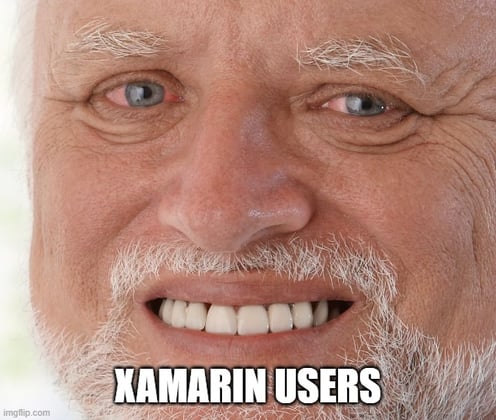How to Migrate Xamarin to .NET MAUI Guide for Programmers
by DeeDee Walsh, on Apr 22, 2024 11:04:46 AM
NEWS ALERT!! Xamarin is officially out of support!
It's time to think about what's next for your Xamarin apps and the more efficient .NET MAUI has emerged as the winning successor. MAUI builds on the foundation of Xamarin, simplifying cross-platform app development for developers.
Migrating Xamarin to .NET MAUI should be quick and easy - with online tutorials and other resources making it seem straightforward. However, these resources and tutorials focus on basic projects - real-world applications present much more complexity than a sample app. This guide digs into the challenges and strategies programmers should know when undertaking a Xamarin to .NET MAUI migration. By the way, in writing this post, I learned that MAUI stands for "Multi-platform App User Interface." So, if you learn nothing else in this post, at least you've learned that.

Xamarin to MAUI Challenges to Anticipate
- Third-party components: Not every Xamarin component has an easy .NET MAUI replacement. If your project leans heavily on these libraries, research alternatives or consider custom solutions.
- Custom architecture and controls: MAUI offers built-in features and popular libraries (like CommunityToolkit.MVVM) that REALLY simplify your current MVVM, navigation or dependency injection implementations. Adapting your architecture to these MAUI standards streamlines the process.
- Missing controls: MAUI most likely doesn't have direct equivalents for controls like SegmentedControl or complex Calendar implementations from Xamarin. Be prepared to rework these UI aspects or source community-developed MAUI-compatible controls. One specific example is the MapRenderer - scenarios may arise when you need to create a new feature or find a suitable third-party package instead of directly migrating.
- Renderers vs handlers: MAUI's handlers provide better performance compared to Xamarin's renderers. Understanding this shift is critical because handlers have a different structure and utilize the "mapper" concept.
- Project structure: The single project structure of MAUI might require you to rethink and refactor the way you previously managed platform-specific code.
Xamarin to .NET MAUI Migration Strategies
- Leverage the .NET Upgrade Assistant: Microsoft's .NET Upgrade Assistant is a valuable tool for automating the migration process. It can upgrade project files, make common code updates, and guide you through changes to project structure.
- Embrace MAUI's strengths: Don't just make your code work in MAUI, but refactor it to fully utilize MAUI's built-in features (like WeakReferenceMessenger), improved performance and streamlined approach for handling colors and fonts. MAUI simplifies navigation with components like Shell, eliminating complex navigation structures and offering built-in dependency injection without reliance on third-party packages.
- QA as a partner: QA plays a vital role during migration. Before testing the migrated application, testers should familiarize themselves with the Xamarin app's functionality, document any existing bugs, and thoroughly understand the expected results. Consistent communication between developers and QA ensures a smooth migration.
- Join the community: Because MAUI is a first-class member of the .NET library, it has a thriving community. All of the amazing .NET community resources, including lots of great stuff on Reddit, Discord, StackOverflow, .NET Foundation, and more, are available to .NET MAUI developers. Also, if you're looking for out-of-the-box MAUI functionality, go check out what our friends at Progress have going on.
Key Takeaways for Xamarin to MAUI Migrations
Remember that a successful migration isn't just about making your code compile, but about creating a better app that fully leverages .NET MAUI's features and platform advantages. With numerous Xamarin apps in existence, many enterprises will be looking to make the transition in the coming years.
Growth Acceleration Partners (GAP) Expertise
At GAP, we're experts in code migrations. We've developed a tried-and-true methodology that ensures a smooth and efficient transition from Xamarin to .NET MAUI. Our team of experienced engineers can help you navigate the challenges outlined in this post - plus deliver a robust, future-proof .NET MAUI application.
Contributors to this post:
- Evelyn Juarez is a delivery manager at GAP
- Rebeca Alvarado Arias is a QA engineer at GAP
- Alonso Chen Chen is an advanced software engineer at GAP
- Christian Sandoval is a software engineer at GAP


